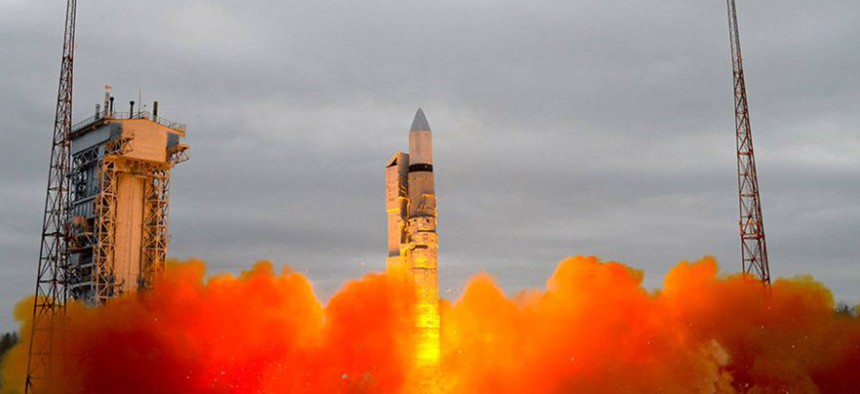Does Russia Have War Bots in Space?
Moscow’s latest satellites might be bashing into other orbiting things — on purpose.
The world’s major powers follow an unwritten rule when it comes to space exploration: no weapons in orbit. But lately the three leading space nations—the US, China, and Russia—have been accused of ignoring this gentlemen’s agreement. Russia, especially.
The accusations involve a trio of Russian satellites that may be “suicide” weapons, devices that can smash into and destroy other satellites. The craft are certainly suspicious. Russia did not announce the satellites or fully register them with the UN, as launch nations generally do. The craft practically dance around in orbit. One may even have collided with another object. To be fair, the satellites could be agile spy craft or repair drones. But it’s their potential as weapons that’s worrying.
“You can probably equip them with lasers, maybe put some explosives on them,” Anatoly Zak, a space historian and journalist, told Quartz. “If [one] comes very close to some military satellite, it probably can do some harm.”
Russia launched the craft in March from the Plesetsk Cosmodrome, around 800 kilometers (497 miles) north of Moscow. Brian Weeden, a former officer in the US Strategic Command’s Joint Space Operations Center, began tracking the satellites soon after. He described the behavior of Cosmos-2504, one of the trio, in a recent article for The Space Review.
“The first maneuver was detected on Apr. 9, followed by a few more small maneuvers over the next week to bring it closer to the Briz-KM rocket body [that helped launch the satellite],” wrote Weeden, who is now an analyst with the Secure World Foundation, a nonprofit that advocates on space policy. “Between Apr. 15 and 16, Cosmos-2504 went from an estimated 4.4 kilometers (2.7 miles) above to 1.4 kilometers (.9 miles) below the Briz-KM.”
That alone isn’t too alarming. Many nations have launched satellites that can maneuver between orbits. These craft can have peaceful uses, such as inspecting and repairing other satellites. But what happened during Cosmos-2504’s maneuvers was more interesting.
“At some point during that pass, the Briz-KM’s orbit was disturbed by an unknown perturbation, which could have been the result of a minor collision between the two space objects. If it was, the impact was very slight and did not result in additional debris being generated.”
If the collision was planned, it may well have been a military test. During a conflict, Russia could knock out other countries’ satellites—and by extension, those countries’ ability to communicate, navigate, and spy. The satellites join a list of craft that are not officially weapons, but certainly have military capabilities. America’s nimble X-37B, which first launched in 2010, is basically a quarter-size, robotic Space Shuttle. It’s officially a research craft designed to carry scientific experiments into orbit. Still, the X-37B has the maneuverability and flexibility to approach and tamper with other spacecraft. China’s SY-7, which launched in 2103, is equally provocative: it has an extendable claw that could literally tear apart other satellites.
Yet of all these maneuverable craft, the new Russian satellites are among the most weapon-like. The collision function has no imaginable application besides destruction. And for anyone interested in keeping weapons out of space, that’s deeply troubling.





